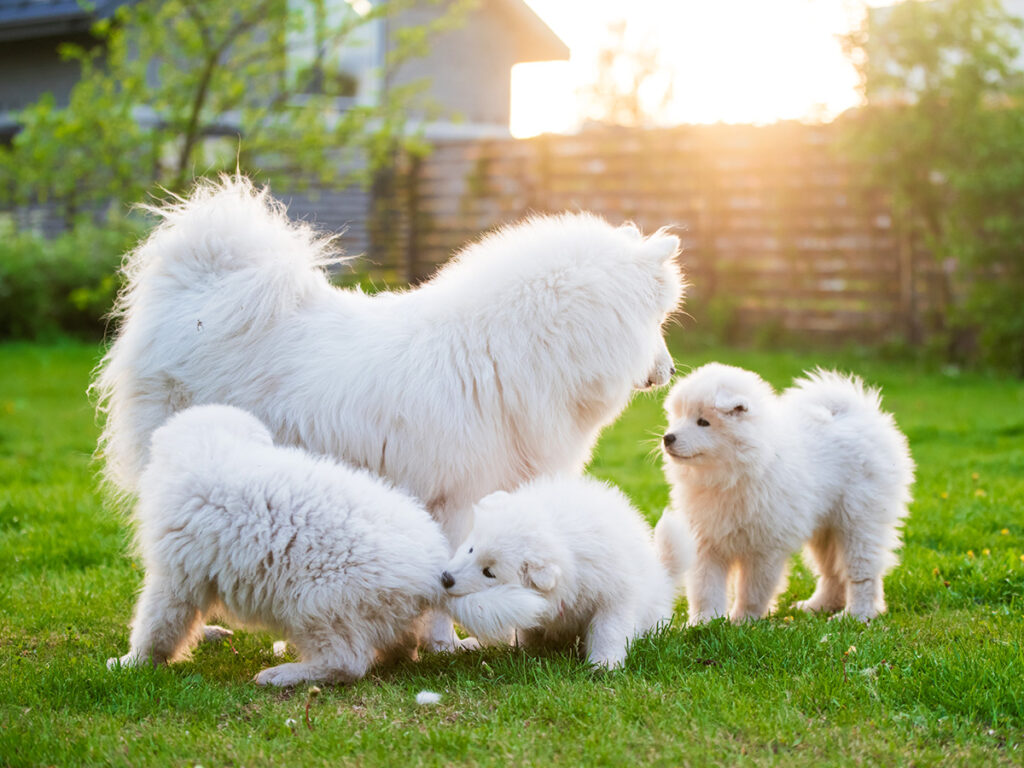One of the most important aspects of owning a dog is correctly estimating your pet’s adult size, so you will know if they will be too big for your home as an adult. So one bit of information that people always want to know is: how big are Samoyeds?
Hearing the breed-name Samoyeds will immediately bring to your mind the fluffy, friendly, and loving dogs that they are. Samoyeds are unique and stand out from other dog breeds for their incredible beauty and size.
Samoyeds were bred to pull sleds in freezing weather for long distances. So they have a thick coat that’s meant to keep them warm, and they are larger than most dogs. But, what is the average Samoyed size?
Let’s jump right into the topic!
Table of Contents
How Big Are Samoyeds?
While the general perception is that Samoyeds are massive-sized dogs, due to their classification as herding dogs, they are, in fact, medium-sized. On average, Samoyeds are medium-sized dogs, but because of their fluffy and dispersed fur, they appear a lot bigger than they actually are. This does not mean they are in any way small; instead, they are more on the moderate side of sizes.
There are two versions of the Samoyed breed, with the white or cream coat. The cream-coated version can be slightly larger.
However, they grow to be medium-sized, with males being bigger than females by an average of 10%.
What is the Average Samoyed Height?
Samoyeds have a good height, which is visible since they always appear standing tall at somewhere around the hip length of an average height person. When measured at the shoulder – Samoyed size is between 19 and 23.5in (48-60cm). However, sometimes it may go a little bit beyond that.
Female Samoyed usually has 20 inches, while the average falls at two more inches for males. So while they’re not the tallest dog breed, they grow up to have a good height in adulthood. In addition, the head adds a couple of inches in height and makes the Samoyed a graceful and well-built breed.
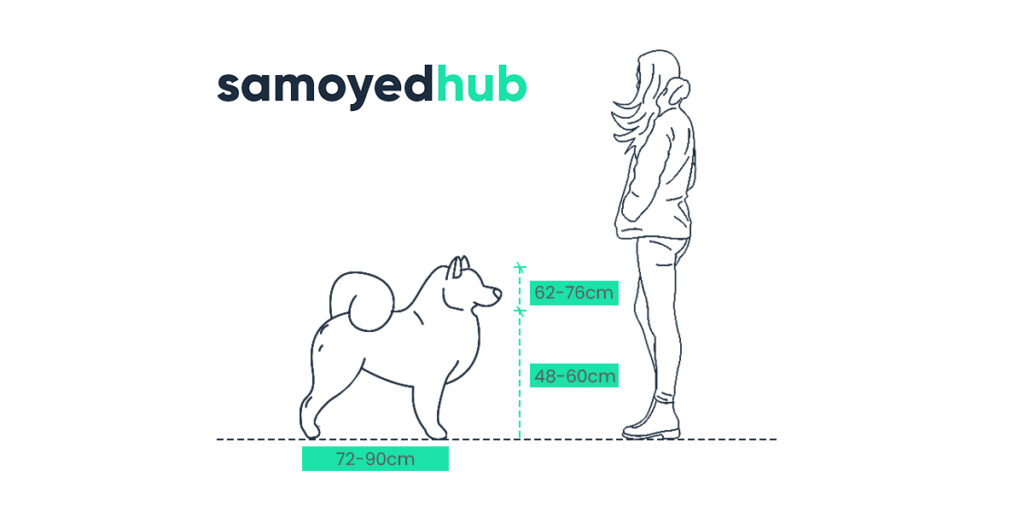

What Age is a Samoyed Full-Grown?
Samoyed puppies seem to grow extremely fast. Although it can vary from dog to dog – A Samoyed puppy is considered full-grown between nine months and 1.5 years.
Females are considered to be fully mature around two years of age. Males usually take about 12 months to reach full maturity, but this can vary considerably from one male to another. The key indicators of maturity are body size and the development of secondary sexual characteristics (e.g., testicular descent in males).
Many factors can affect the length of time during which your puppy will continue to grow. Still, the two essential factors are your dog’s genes and the diet.
Related: When Does a Samoyed Stop Growing?
How Much Do Samoyeds Weigh?
Samoyeds weigh between 35 and 65 pounds (16-30kg). Adult males may have a hefty weight of up to 30 kg (65 pounds), while the average falls at 20 kg (44 pounds). For females, the weight range is somewhere between 16 (35 pounds) and 20 kg (44 pounds). But, of course, the specifics of weight vary according to diet and the kind of lifestyle.
Is My Samoyed Overweight?
The easiest way to check if your dog is overweight or not is by checking his body condition score (BCS).
Here are three easy steps:
1) Feel the top of the shoulders with your hands and push down from front to back on both sides.
2) Feel the ribs; they should feel neither prominent nor sharp beneath the skin.
3) Feel along both sides of your dog’s spine; it should slightly curve downward from its highest part (nearest the neck) toward the hips.
If your Sammie is overweight – a slight waist is visible from the top, ribs are covered with a fat layer.
Also, here is a useful resource which we have prepared for you:
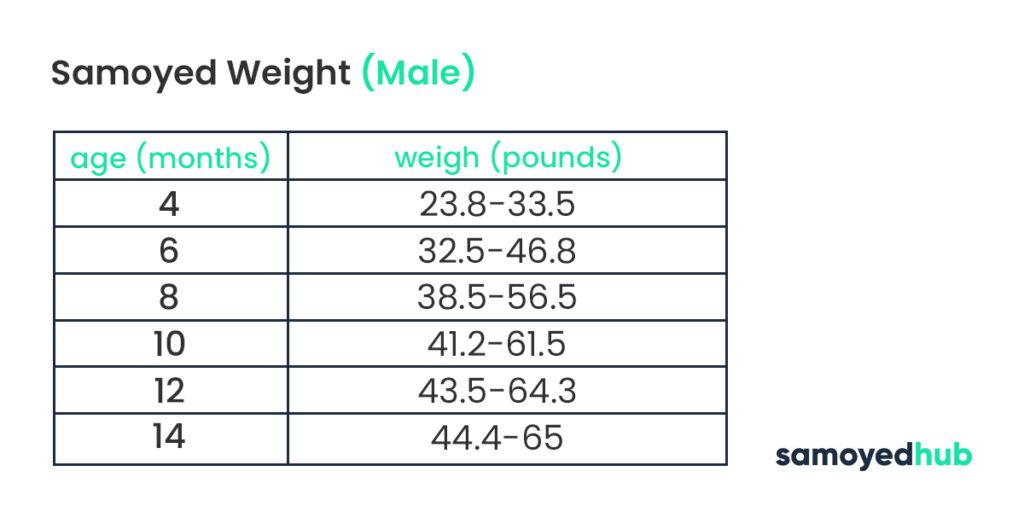

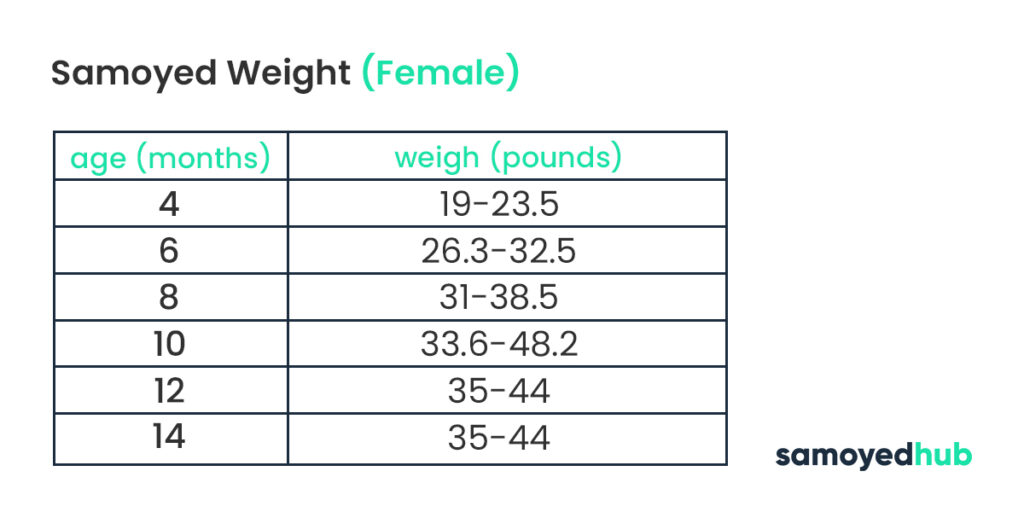

Even if your pet is at an ideal weight, a veterinarian should still check every year for monitoring and early detection of problems.
If you’re not confident that your dog is within an acceptable range, it’s better to be safe than sorry!
Your vet can help you determine what weight loss plan will work best for your canine family member.
Remember that the key to ensuring optimal health for your Samoyed lies in regular exercise and diet monitoring.
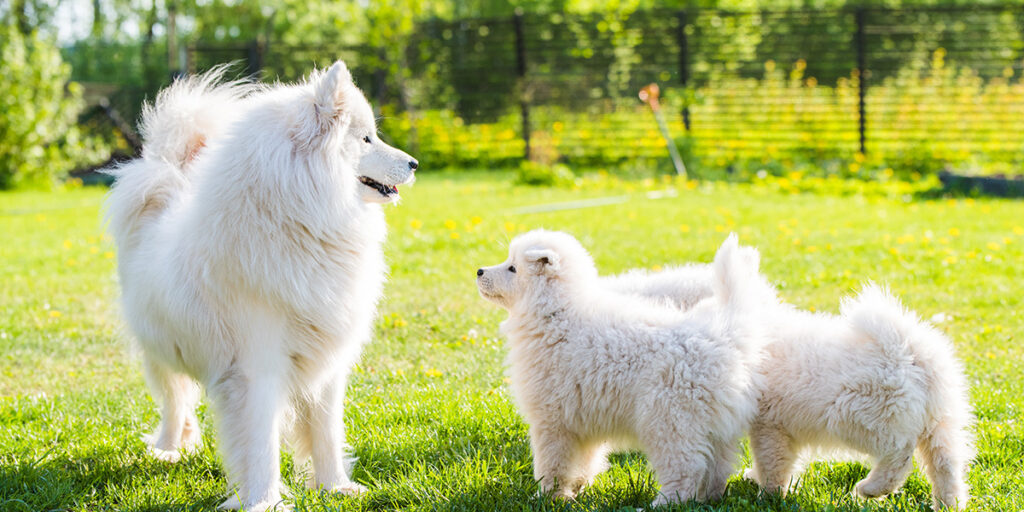

How to Know if My Sammie is Obese?
You can quickly tell if your dog is obese by looking at its waistline. If the waist is barely visible with fat deposits on the back, they are overweight and need help losing some pounds.
The best way to lose weight is to reduce calorie intake. Just make sure you do it gradually, not too fast, because this can lead to other health problems.
If you have chosen a pet food diet, remember that there is no miracle solution, and even on those diets – your dog will lose only 1-2 lbs/month maximum. So try to be patient, spend extra time playing with them.
Also, don’t forget to let your dog drink enough water!
Exercise is essential for overweight dogs – not only it helps them lose weight and keeps the muscles and heart strong.
Is my Samoyed Underweight?
If you can easily see the ribs or spine of your puppy, then they’re underweight!
Like humans, Samoyeds need a certain number of calories every day to maintain their weight and good health. Your vet will determine your dog’s ideal adult weight range based on several factors:
- gender
- age (puppy, adolescent, adult)
- breed mix
- height or size
If your Sammie is underweight – ribs and hips are exposed.
We can’t stress enough how important it is to maintain regular checkups at the vet. That is the best way to ensure your pet is eating enough and not overeating and gaining excess pounds.
Otherwise, there are numerous side effects of being overweight, including health problems such as diabetes, joint dysplasia, arthritis, cardiovascular disease, etc.
Your Turn!
We hope that we have answered the question: ‘How Big Are Samoyeds’!
Now it’s time to share your story!
How big is your Samoyed? – tell us in the comment section below!
Still have questions about the topic? Use the comment box below and ask your question there.
We will try to provide you with the answer as fast as possible.
Thank you for being here, and we hope to see you soon in our other articles!
